
Alfa Romeo C43: will the combination of Red Bull and Ferrari solutions work?
To begin with, it should be noted that the paternity of the car that will be driven by Valtteri Bottas (#77) and Guanyu Zhou (#24), although for branding reasons bears the name "Alfa Romeo", is to be attributed to Sauber, the historic Swiss team based in Hinwil. Having said that, let's start our technical analysis from the front end of the C43, although the technical effort of the design department focused mainly on the rear end - as confirmed by Sauber's Technical Director, Jan Monchaux.
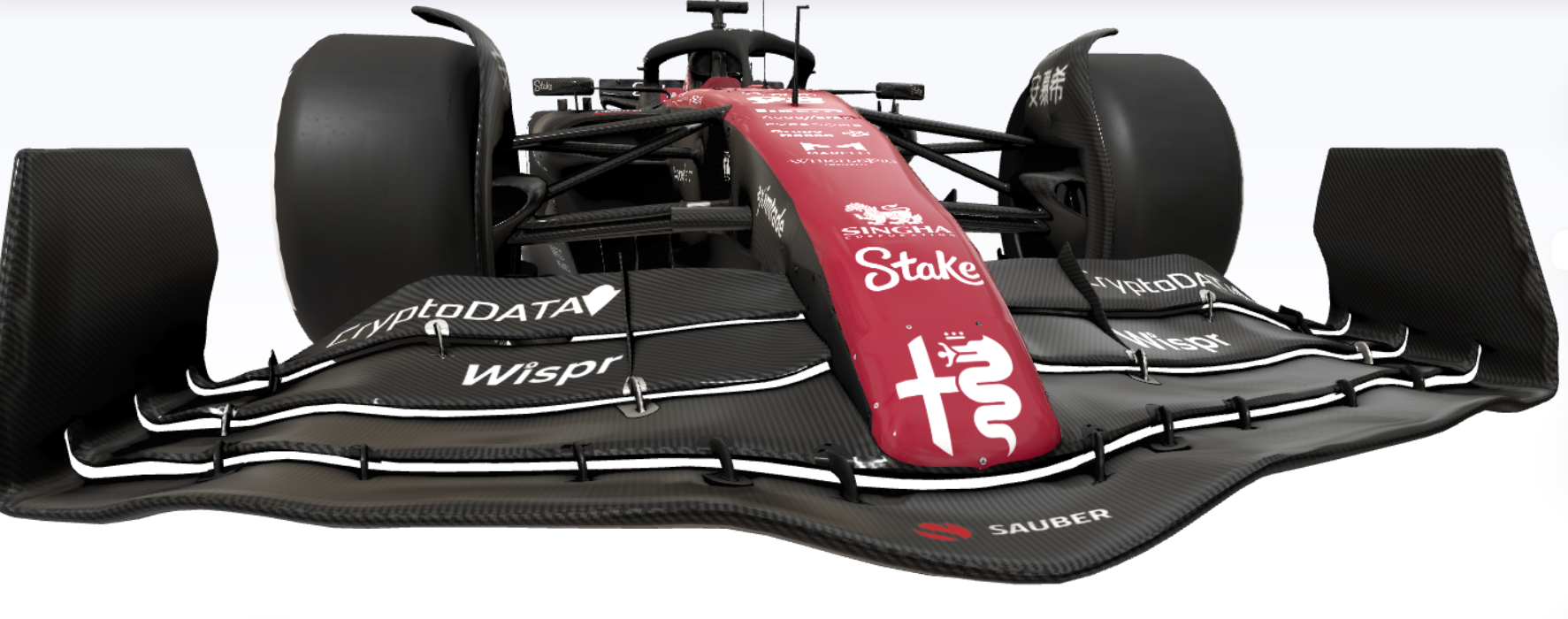
The shape of the front wing is very close to the latest specification introduced at the tail end of 2022, but the most surprising feature is a series of 10 deflectors placed between the main plane and the first flap: something similar was presented by Mercedes at the 2022 Austin GP, but the solution was outlawed by the FIA, as it indirectly exploited its structural function to generate "outwash", namely diverting the airflow outwards.
And speaking of outwash, the curvature of the outer portion of the flaps up to their linking with the endplates suggests the desire to direct the large airflow arriving at the front wing towards the outside of the front tyres. After the expectable experiments at the beginning of 2022, most of the teams seemed to converge on this aerodynamic philosophy: looking at the renderings, even this C43 is no exception.
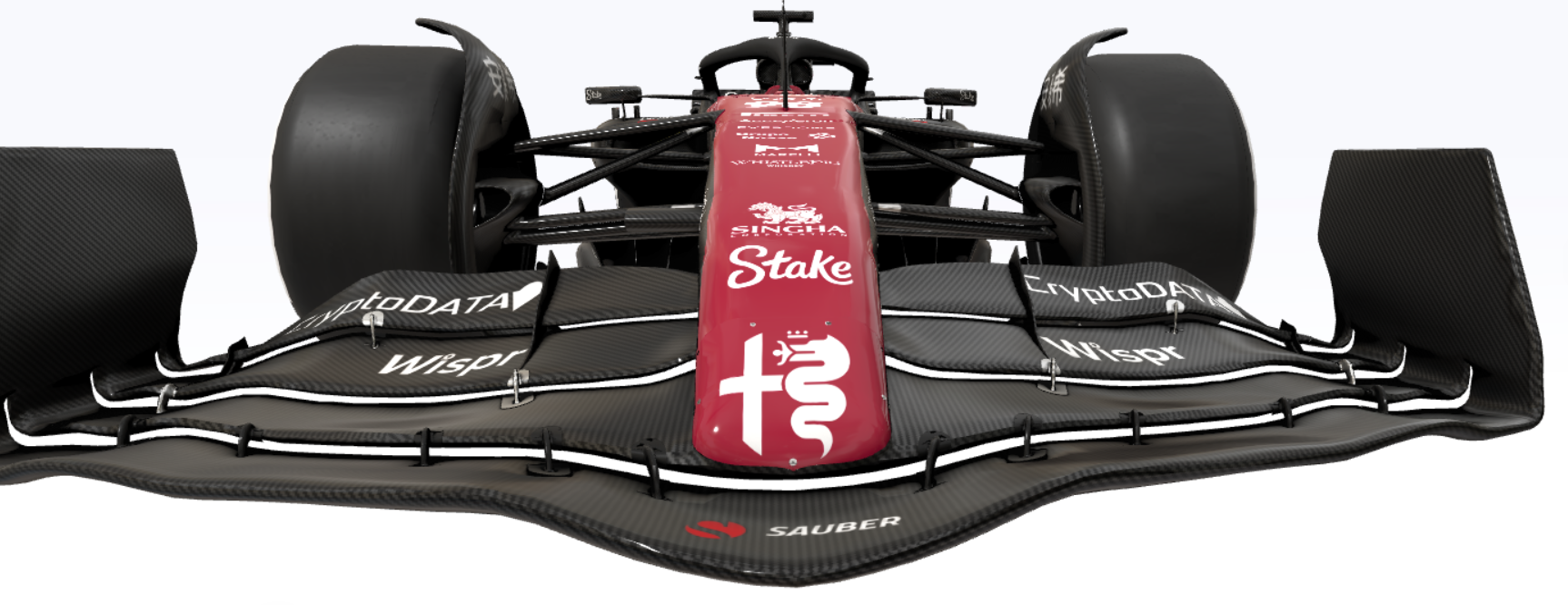
The front suspensions maintain the "push-rod” configuration: to such layout are often attributed big differences compared to the "pull-rod" configuration in terms of vehicle dynamics, but the extreme stiffness of nowadays single-seaters of this technical generation means that the choice of kinematic systems is made almost exclusively on the basis of aerodynamic criteria, or - less importantly - on the simplicity of intervention for the mechanics in case of modifications or replacements.
The suspension arms are in fact a real nightmare for the aerodynamic departments, contributing only to drag and not to downforce production (as prescribed by the regulations).
Sidepods derived from Red Bull, but with the same inlet as the F1-75!
Since last year, the sidepods have become one of the major elements of differentiation from one single-seater to another. On the Alfa Romeo C43 you can observe a mix between two aerodynamic philosophies at odds, namely those of Ferrari and Red Bull.
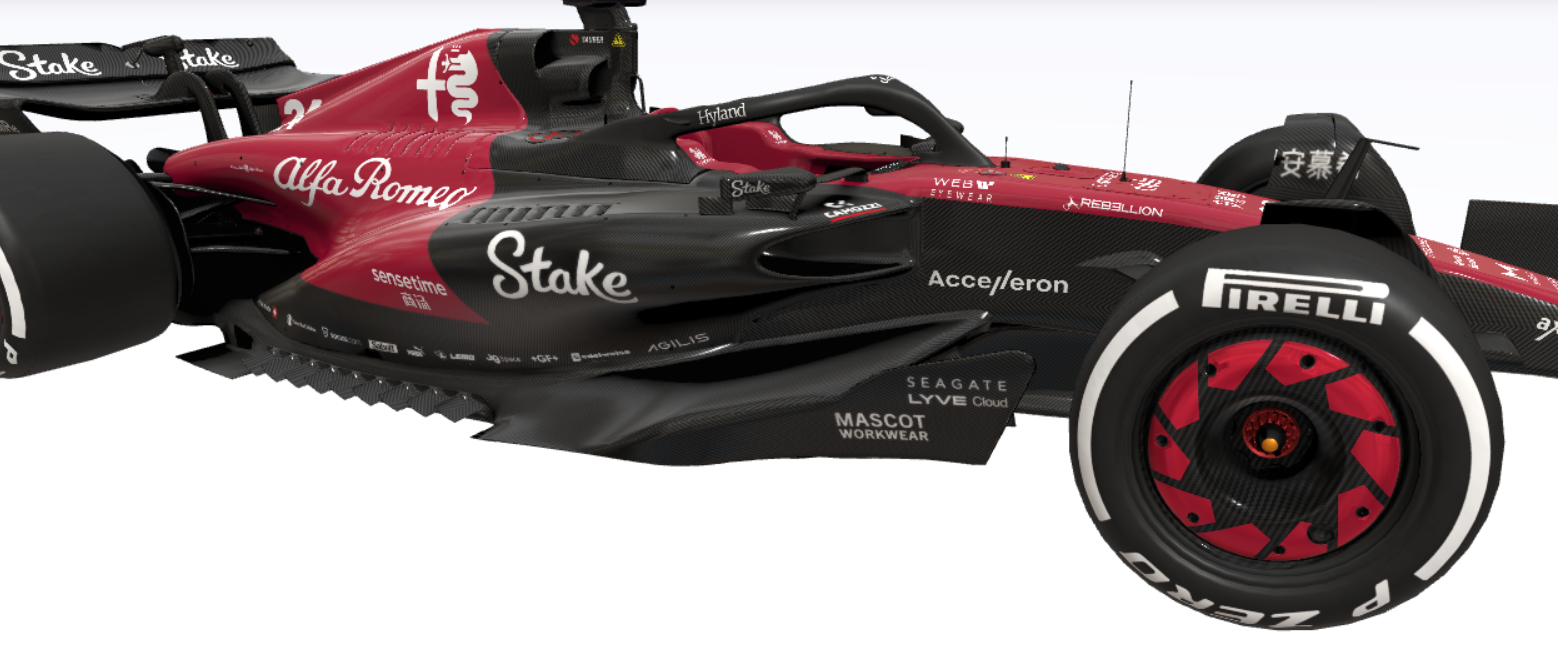
In fact, the sidepod inlet is very similar, if not identical, to the one of F1-75, but the similarities end there... so much so that the whole sidepods themselves head down as you get to the rear.
The reason for this compromise choice derives from the desire to take the best of the two technical solutions:
- The F1-75 style sidepod inlet, ogival in shape and very tall and compact, allows the creation of an undercut useful for the sake of directing the airflow towards the edges of the underfloor (another impressive technical feature, which we will discuss later);
- The downward trend of the Red Bull RB18-esque sidepods aims to exploit the Coanda effect, a phenomenon according to which fluids - air in this case - tend to follow the boundary of solid surfaces in close proximity. Being able to direct the air where it is deemed most appropriate, it makes sense to direct it towards the upper portion of the diffuser: in doing so, its ability to extract air from the underfloor of the car is increased, which results in a greater aerodynamic load generated;
As we know, what on the one hand brings advantages, on the other imposes trade-offs: in this case, freeing up space in the side area means having to move the radiators. Hence, on the C43 the so-called "centerline cooling" has been chosen, i.e. an arrangement of the radiators closer to the centerline of the vehicle, but in a higher position.
Vehicle dynamics, in Formula 1 as well as in any other automotive series, reward an arrangement of the various components as low as possible, in order to lower the COG (“Center of Gravity”). A low COG, in fact, is beneficial for the sake of reducing inertia, especially in transients - i.e. in direction changes.
Obviously, Hinwil's designers must have assessed that the aerodynamic advantages deriving from this choice are greater than the dynamic disadvantages: it is a logical choice, in a Formula 1 dominated by aerodynamic development in the quest for performance.
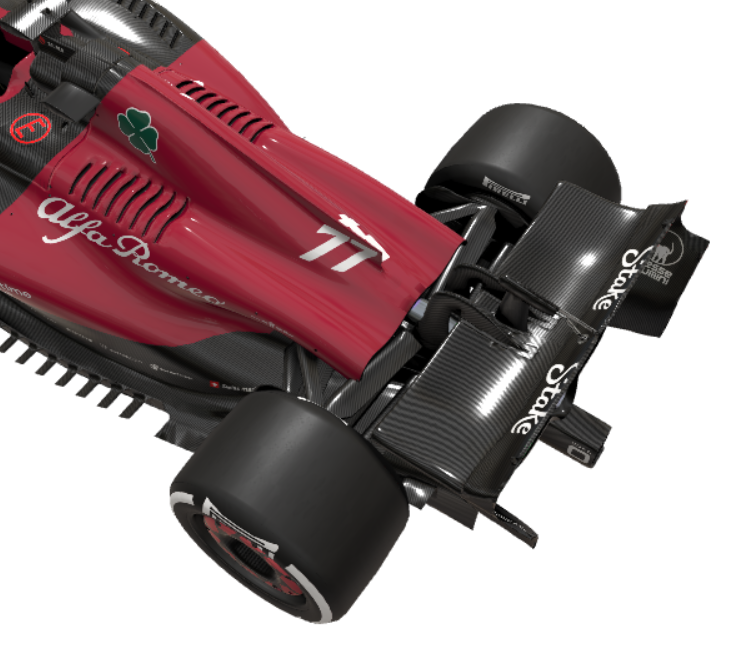
Centerline cooling is also often referred to as "letterbox cooling", because - as the photo above shows - the engine cover outlet’s shape vaguely resembles a mailbox. The reason is that the enormous amount of heat exiting from the Power Unit requires an outlet dimensioning that allows its rejection, otherwise the Power Unit itself will overheat (and, in worst cases, that might lead to technical issues!).
Letterbox cooling arises not only from a thermal management purpose, but also from - once again - aerodynamic benefits. In fact, the positioning of the radiators in the central area creates a "bulb" which clearly separates the flows going towards the diffuser from those directed higher up, towards the rear wing. The less "worked" the airflow is, the more effective it will be: if you don't deplete them of their energy content, you allow the rear wing to work more effectively.
The roll-hoop is reinforced, but the airbox retains its particular design!
One of the peculiarities brought year after year by the Swiss team is certainly the airbox, thanks to which fresh air is supplied to the entire Power Unit.
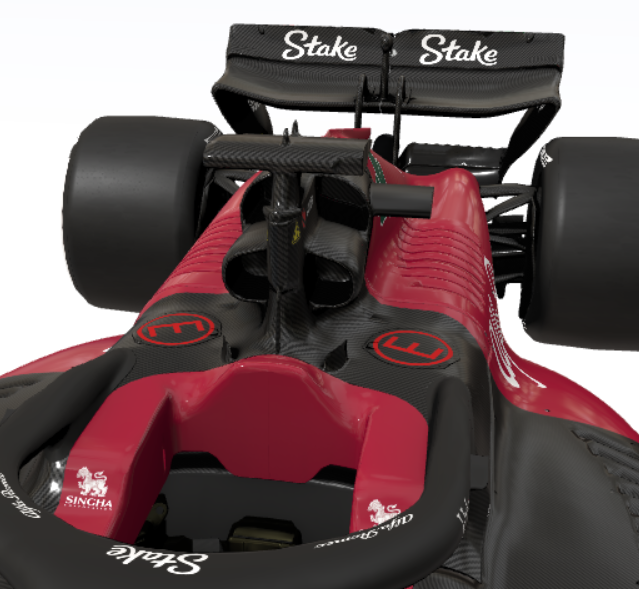
Even in 2023, despite the strict structural requirements imposed by the FIA following the accident of Guanyu Zhou himself at Silverstone, the iconic blade configuration of the deformable structure will be seen. On the C43, the airbox itself is divided into 4 portions: not having the opportunity to peek under the engine cover it’s difficult to understand the layout of the cooling circuits, but it can be assumed that they are detached one from another, as we have often seen in the past: one pipe goes to the internal combustion engine, another one to the ERS, another one to the electronic control unit, another one to the battery pack, and so on…
The underfloor edges are "sealed" through an extreme solution!
Keeping our focus on the center of the car, the technical solution that I consider most innovative is the one that we can find on the underfloor edges. This macro-component, certainly the most important in the cars "designed" by the current Technical Regulations, requires edges that are able to seal it - mechanically or aerodynamically - from the external environment.
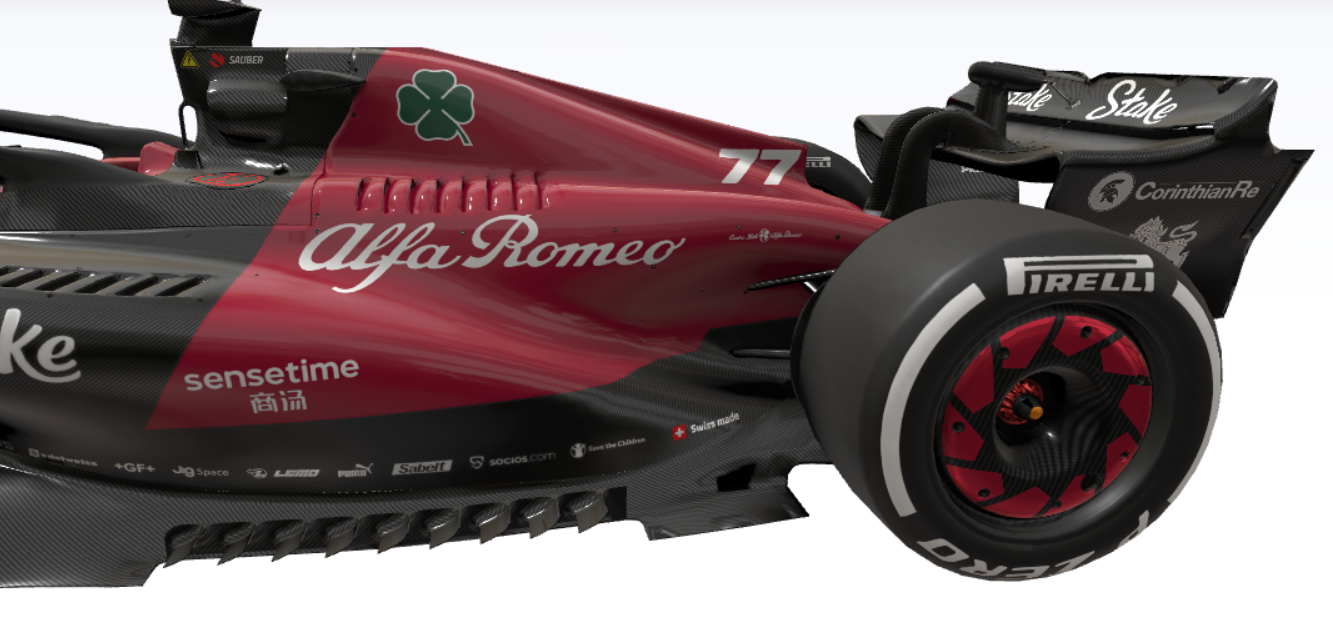
In fact, since aerodynamic load is generated by the pressure difference between the upper and lower surfaces of the car bodywork, any possible air leakage from the edges of the underbody would cause the underbody pressure to approach levels close to atmospheric pressure. Ultimately, we would have a less effective underfloor and a car less "planted" on the ground, which would therefore struggle to maintain high cornering speeds (especially in the middle of the corner).
The expedient used on the Alfa Romeo C43 to avoid the aforementioned risk consists of a series of 9 little flaps arranged one after the other. Although it is reasonable to believe that these structures have been validated by Sauber's CFD simulations, I believe it’s very difficult to make them work consistently on the track. Their operating principle, close to the one of the "cuts" on the underfloor edges used in F1 until 2021, is based on the creation of powerful vortices that travel along the sides up to the rear tyres area. These vortices do not generate aerodynamic load; if anything, they have a direct effect just on drag increasing; however, they act as a "wall" between the environment and the underbody, creating the desired "seal" mentioned above.
It's hard to believe that this feature will be considered 100% compliant with the rules by the FIA, given the negative impact it will surely have on the turbulent wake left behind… but if it gets the green light from the Federation, I expect more than one team to try and embed it in their concepts!
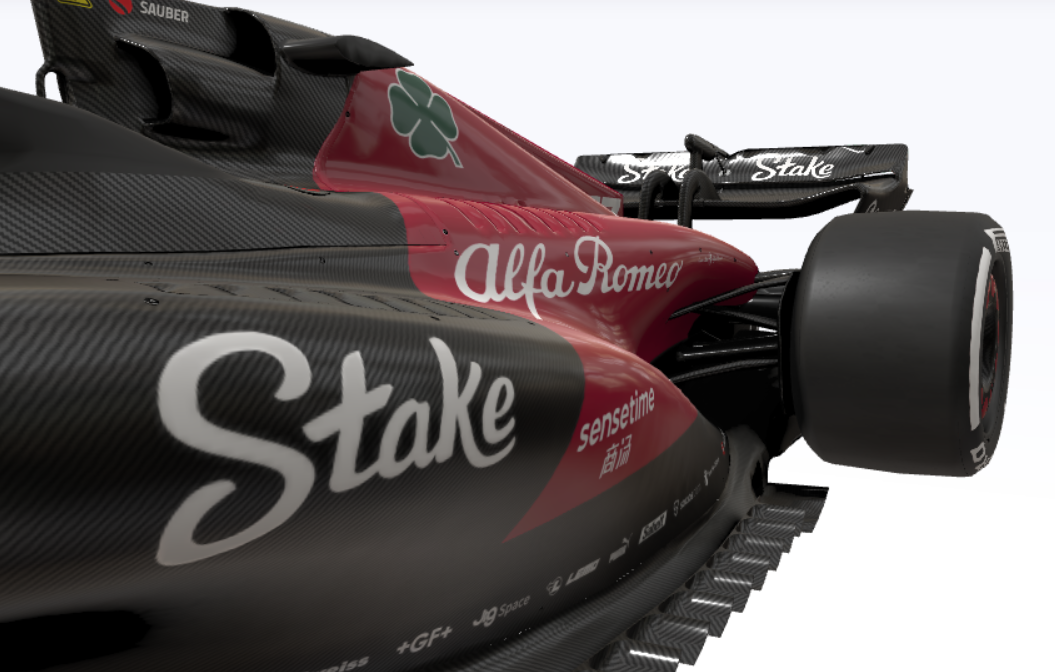
Approaching the terminal portion of the C43, one of the elements to highlight is certainly the rear suspension. Like its front counterpart, it has a push-rod configuration. And, again in analogy with what happens on the front end, the upper triangle geometries are different compared to 2022: here, however, we reserve the right to see which solution will be brought to the track, since between the physical show-car unveiled in Zurich by the Bottas and Zhou and the renderings shown so far there are differences in that area.
However, it should be highlighted the great flexibility that Sauber can afford, having decided not to purchase the rear suspension unit together with the gearbox from its Power Unit supplier, Ferrari.
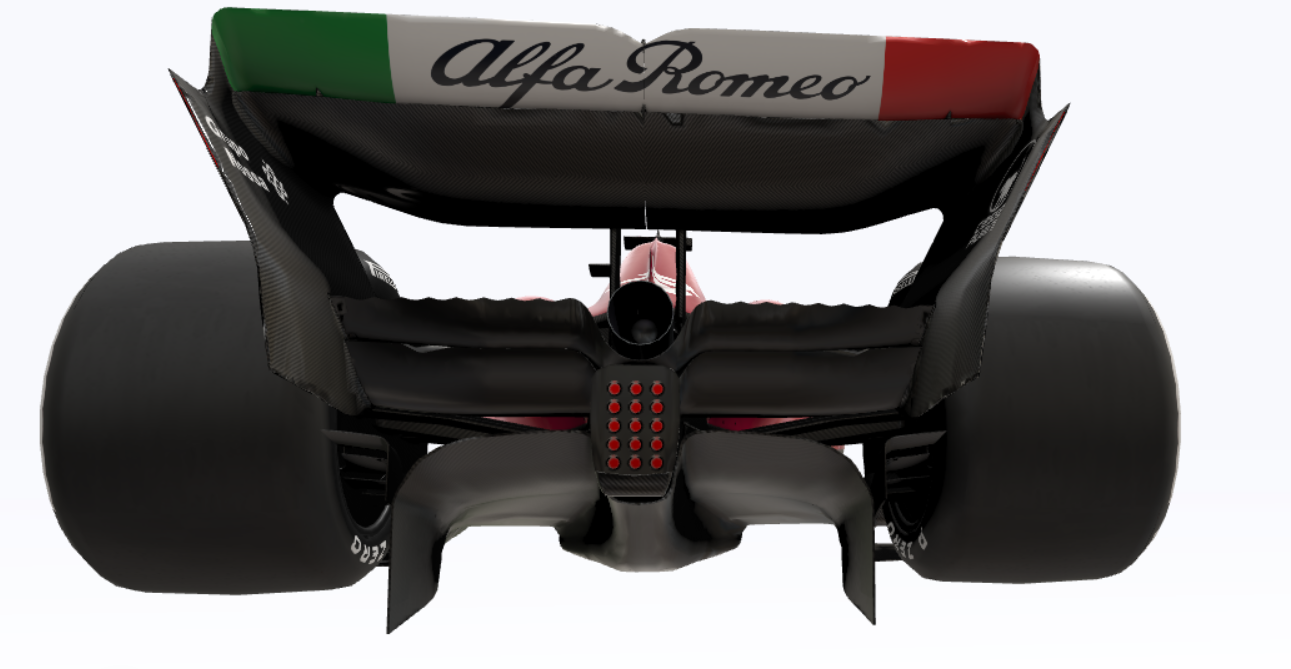
Finally, a technical fun fact concerns the beam wing, i.e. the double profile placed under the rear wing (which brings no novelty, at least for now) and above the diffuser. Its upper profile, in fact, has a wavy trailing edge, in order to delay the separation of the flow and the consequent boundary layer detachment: something similar was experimented by Williams in 2004, Renault in 2005 and McLaren in 2014 and 2015…
What can we expect from the pre-season tests in Bahrain?
Like any innovative project, it will take time to calibrate the new Swiss single-seater: with this in mind, I believe that the first day of testing will be dedicated to "back-to-back” tests useful for validating any daring technical solution. If the results of the dynamic benches and simulations were to be confirmed on the track, the C43 could undoubtedly be a competitive car... not like the top teams, but perhaps at the top of the midfield!
Index
Alfa Romeo C43: will the combination of Red Bull and Ferrari solutions work?